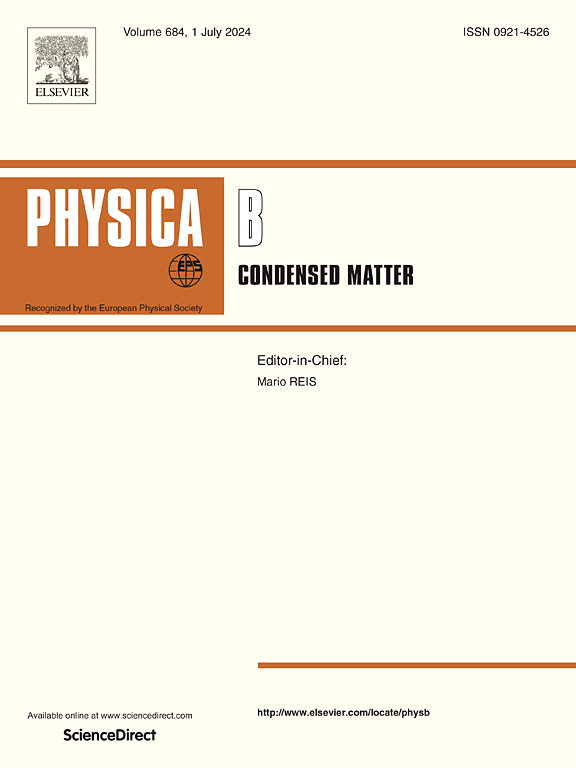一些地外铁镍钴合金的磁性特征:使用磁化测量和Mössbauer光谱学的研究
IF 2.8
3区 物理与天体物理
Q2 PHYSICS, CONDENSED MATTER
引用次数: 0
摘要
采用扫描电子显微镜(SEM)、能谱仪(EDS)、x射线衍射、Mössbauer谱仪和磁化测量等方法研究了铁和石铁陨石中Fe-Ni-Co合金的磁性特征。SEM和EDS表明,随着Ni浓度的变化,不同合金中α-Fe(Ni, Co)、α-Fe(Ni, Co)、γ-Fe(Ni, Co)和γ-FeNi(Co)相的组成也不同。Fe-Ni-Co合金的Mössbauer光谱由不同数量的磁六元组成。57Fe超细参数值分别对应于α-Fe(Ni, Co)、α2-Fe(Ni, Co)、γ-Fe(Ni, Co)和γ-FeNi(Co)相。某些Fe- ni - co合金的饱和磁矩略高,而其他Fe- ni - co合金的饱和磁矩略低于纯铁。三颗陨星的Fe-Ni-Co合金磁化曲线的零场冷却(ZFC)和场冷却(FC)分支在零场冷却(ZFC)曲线位于场冷却(FC)曲线之上时表现出不同寻常的行为,这是非常罕见的现象。本文章由计算机程序翻译,如有差异,请以英文原文为准。
Magnetic features of some extraterrestrial Fe-Ni-Co alloys: Study using magnetization measurements and Mössbauer spectroscopy
Magnetic features of extraterrestrial Fe-Ni-Co alloys from iron and stony-iron meteorites were studied by scanning electron microscopy (SEM) with energy dispersive spectroscopy (EDS), X-ray diffraction, Mössbauer spectroscopy and magnetization measurements. SEM with EDS demonstrated the presence of different compositions of the α-Fe(Ni, Co), α2-Fe(Ni, Co), γ-Fe(Ni, Co) and γ-FeNi(Co) phases in various alloys with variations in Ni concentrations. The Mössbauer spectra of Fe-Ni-Co alloys consist of different numbers of magnetic sextets. The values of 57Fe hyperfine parameters were assigned to corresponding α-Fe(Ni, Co), α2-Fe(Ni, Co), γ-Fe(Ni, Co) and γ-FeNi(Co) phases. The saturation magnetic moments for some Fe-Ni-Co alloys were slightly higher while those for other Fe-Ni-Co alloys were slightly lower than that of pure Fe. The zero-field-cooled (ZFC) and field-cooled (FC) branches of the magnetization curves showed unusual behavior for Fe-Ni-Co alloys from three meteorites when the ZFC curve lies over the FC one which is a very rare phenomenon.
求助全文
通过发布文献求助,成功后即可免费获取论文全文。
去求助
来源期刊

Physica B-condensed Matter
物理-物理:凝聚态物理
CiteScore
4.90
自引率
7.10%
发文量
703
审稿时长
44 days
期刊介绍:
Physica B: Condensed Matter comprises all condensed matter and material physics that involve theoretical, computational and experimental work.
Papers should contain further developments and a proper discussion on the physics of experimental or theoretical results in one of the following areas:
-Magnetism
-Materials physics
-Nanostructures and nanomaterials
-Optics and optical materials
-Quantum materials
-Semiconductors
-Strongly correlated systems
-Superconductivity
-Surfaces and interfaces
 求助内容:
求助内容: 应助结果提醒方式:
应助结果提醒方式:


